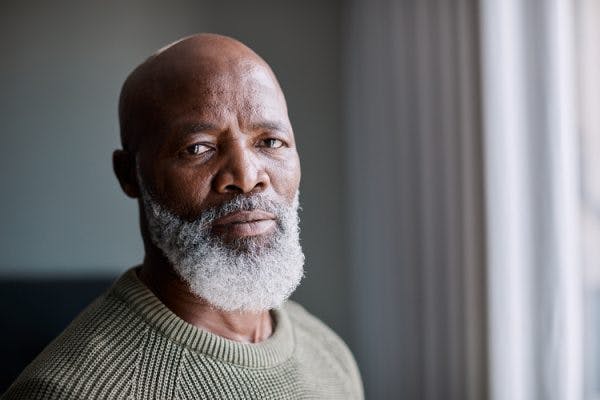Lack of motivation after brain injury might seem like depression or laziness, but the problem often goes much deeper. It could be a condition called adynamia, which can result from damage to the frontal lobe.
Low motivation after brain injury is more a symptom of brain injury than a personal choice to be lazy. It’s important to understand why this occurs so that you can help your loved one find focus and motivation on the road to recovery.
Causes and Contributing Factors of Adynamia
When survivors demonstrate a lack of motivation and seem disengaged in daily activities, it could indicate a condition known as adynamia. This makes it difficult for survivors to feel motivated due to changes in cognitive function, particularly after a frontal lobe injury.
The frontal lobe is an area of the brain that plays a critical role in cognitive functions. When the frontal lobe is damaged, certain cognitive functions may be difficult to perform, such as the ability to plan ahead, make thorough decisions, and multitask. Because of this, survivors may become frustrated or appear unmotivated.
Lack of motivation can often be a direct result of frontal lobe injury or it can stem from other contributing factors such as poor problem-solving skills, poor judgment, and memory problems.
Determining the cause of adynamia after a frontal lobe injury can be challenging. To better determine the cause of adynamia and to address it more directly, consult with a Speech-Language Pathologist (SLP) or an Occupational Therapist (OT). Both professions have training in cognitive rehabilitation after brain injury.
Signs and Symptoms of Adynamia After Brain Injury
Adynamia is also a symptom of executive dysfunction. Executive dysfunction is an umbrella term for many cognitive, emotional, and behavioral impairments that can occur after brain injury.
Symptoms of adynamia after brain injury can include:
- Low activity
- Sleeping in late
- Loss of interest
- Social isolation
- Watching television for hours
Lack of motivation after brain injury can look similar to depression or laziness but it is not always the case. Professionals such as an MD, SLP, or OT can help identify adynamia if present.
It’s important to pursue intervention for adynamia because lack of motivation after brain injury can interfere with recovery. When adynamia is severe survivors may struggle with finishing basic self-care tasks like showering or participating in rehabilitation.
For instance, if a survivor is feeling unmotivated or uninterested, (s)he may not want to go to therapy or partake in any therapy exercises.
It is best to discuss your observations with your medical professionals involved to determine the causes, symptoms, and best coping mechanisms of adynamia.
How to Overcome Adynamia and Boost Motivation After Brain Injury
While adynamia can be challenging, there are ways to help boost motivation and initiation. For example, two primary ways to improve motivation are to simplify tasks and make activities more enjoyable.
Here are a few tips to help address adynamia and boost motivation after brain injury:
Find a Routine
Survivors usually have a structured routine when recovering at the hospital, but some of the consistency can be disrupted when returning home.
Having a consistent routine for accomplishing Activities of Daily Living help the survivor to follow the structure and perform tasks more automatically and thus requiring less self-motivation to accomplish daily tasks.
In addition to this, breaking down tasks into steps can help reduce cognitive demands and, as a result, boost motivation. This can provide more ease when performing a task and prevent the survivor from becoming overwhelmed.
Additionally, the more often a survivor is performing daily tasks independently the more opportunity for neuroplasticity which is essential for recovery. This is more likely to occur the more structured the daily routines.
Plan your days so there isn’t a lot of time spent without activities/stimulus. Consulting with an occupational therapist can help create a structured routine suitable for the survivor.
Create Choices
Survivors may also become overwhelmed when having unlimited or many options to choose from. Having a lot of options requires more cognitive thinking and decision making. To avoid overwhelming the survivor, it’s important to narrow down options as much as possible for them.
Therefore, caregivers can help loved ones by offering less choices. For example, rather than asking “what would you like to do today?” you may ask “would you like to go to the park or the library?”
Similarly, survivors can empower themselves by asking caregivers for help with this.
Set Goals
Setting long-term or short-term goals with rehabilitation or other personal goals can help ease the process of recovery. A great goal-setting method to use is known as the SMART approach. It focuses on setting goals that are:
- Specific
- Measurable
- Achievable
- Relevant
- Time-bound
The more personalized the goals are, the more it can boost motivation to accomplish them.
Have Fun!
Creating a fun environment is one of the best ways to stimulate the brain and boost motivation.
Sometimes adding stimulus to the environment like music or a deadline can help a survivor stay focused on tasks and complete them in a timely manner.
Recreational therapy for example is one of the best ways to participate in exciting and brain-stimulating activities. Making therapy fun, however, doesn’t only have to be outdoors. It can happen from within the comfort of your own home.
For instance, gamified rehabilitation devices such as the MusicGlove can help make therapy more engaging. Many survivors find it motivating because the combination of music and gaming turns therapy into an immersive experience.
Cognitive Rehabilitation
Because adynamia can accompany other cognitive difficulties, such as impaired attention or memory, there could be hope for recovery in cognitive rehabilitation. During this therapy, survivors engage in stimulating cognitive exercises that help spark neuroplasticity and improve various cognitive functions.
While there is limited research demonstrating that cognitive rehabilitation helps with adynamia in particular, it could still be a worthwhile pursuit as it addresses other common effects of brain injury such as impaired memory, problem solving, and more.
Understanding Adynamia After Brain Injury
When a brain injury survivor appears to be unmotivated, it’s important to realize this could indicate a medical condition known as adynamia. Fortunately, there are many ways to boost motivation after brain injury including creating routines, offering narrowed choices, setting goals, and having fun.
Be sure to work closely with a Speech-Language Pathologist or an Occupational Therapist or your Physiotherapist for an accurate diagnosis and even more personalized plan for recovery. Participating in cognitive could be one of the best ways to find motivation on the road to recovery.









